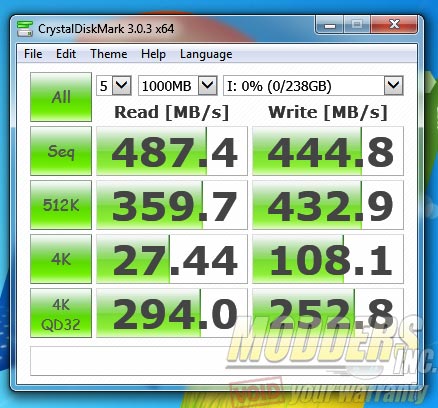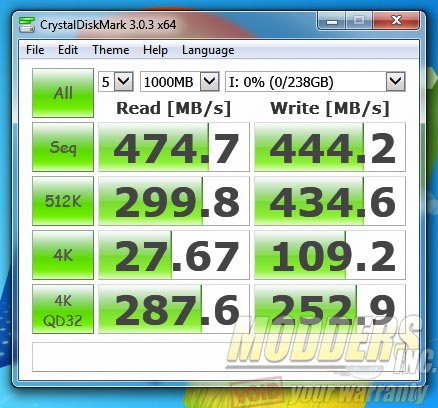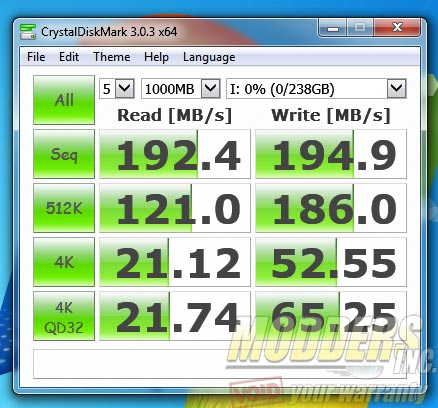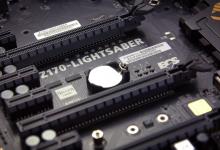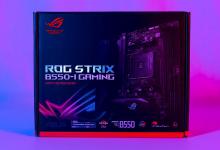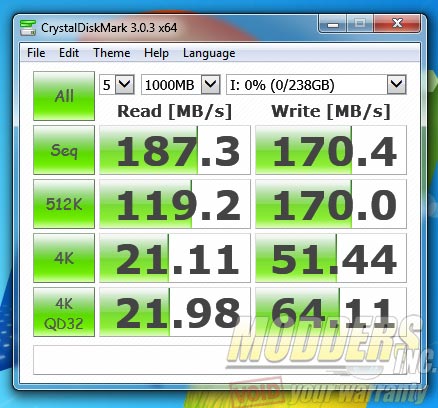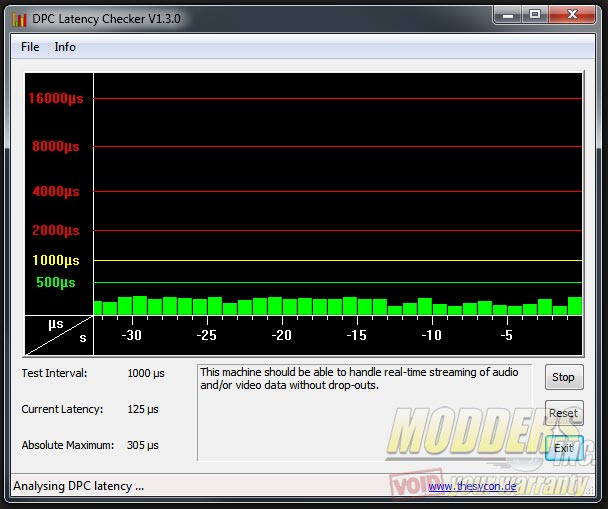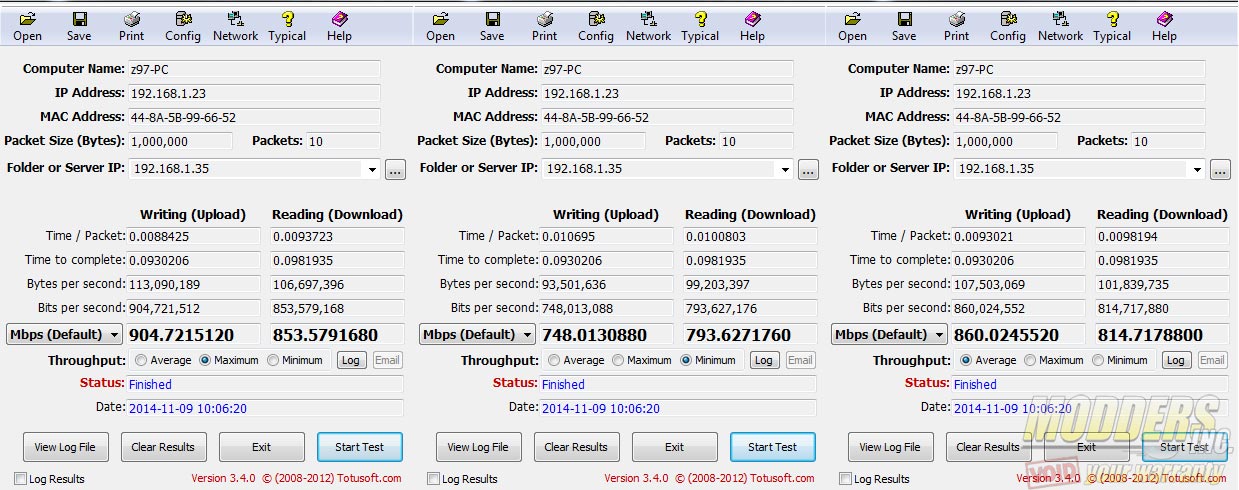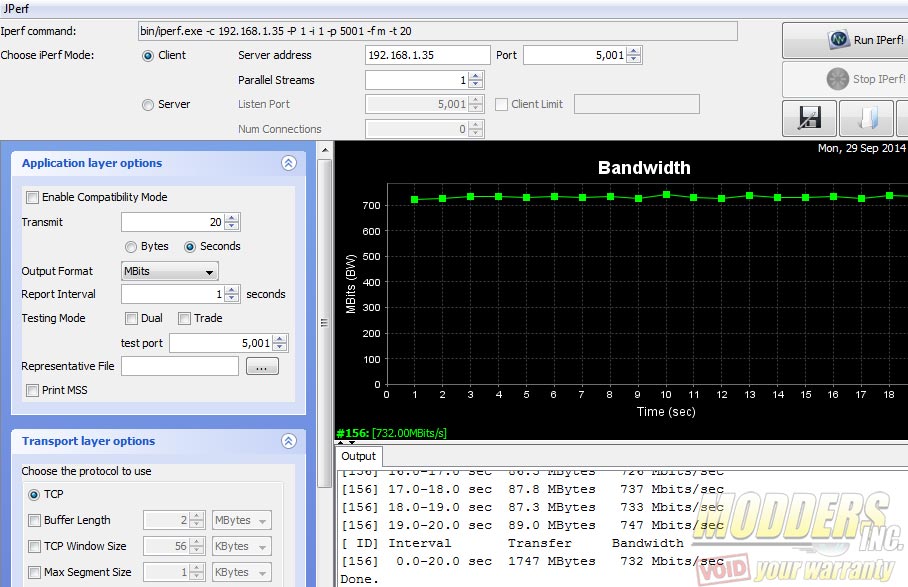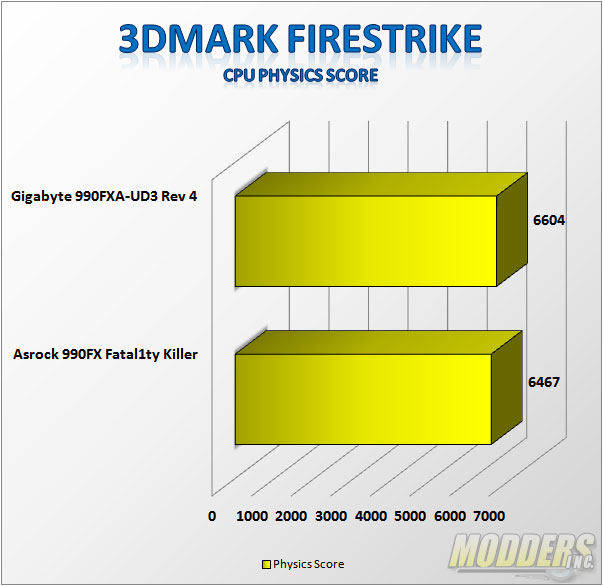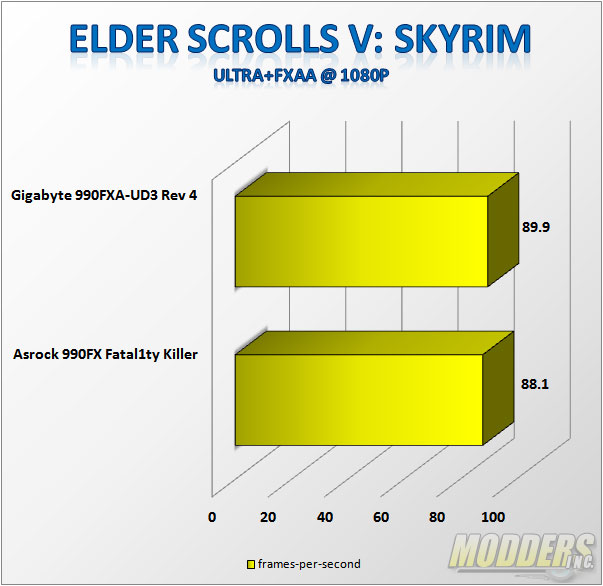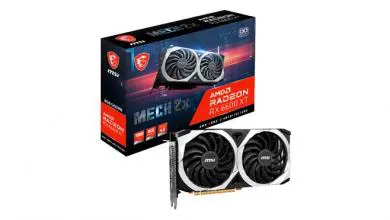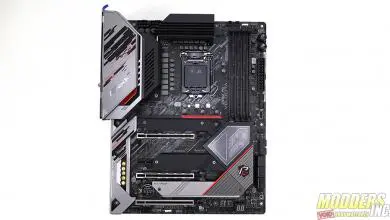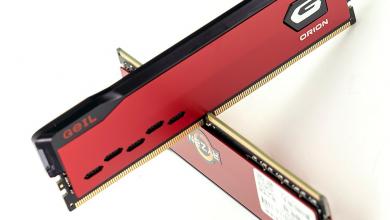Asrock Fatal1ty 990FX Killer Motherboard Review: The Last of Its Kind?
Subsystem and Gaming Benchmarks
All five SATA3 6G connections onboard are provided natively by the AMD SB950 chipset.
The sixth SATA3 6G connection is configured as E-SATA at the rear IO.
Three USB 3.0 ports onboard are provided by an Etron Tech EJ188H USB 3.0 Controller (two via 19-pin USB 3.0 and one via USB 3.0 port).
Four additional USB 3.0 ports in the rear IO are provided by an ASMedia 1074.
On-board Audio
Before proceeding with audio benchmarks, Deferred Procedure Call latency must be first checked to make sure that the system is capable of producing useable results when the Rightmark Audio Analyzer benchmark was run. DPC is a Windows function that involves prioritizing tasks within the OS and high DPC latencies can be caused by several things including hardware device conflict. The DPC checker graphically displays the latency level of the system in real time so as long as the bars are in the green, the system should be able to handle audio and video streaming without drop outs or stutters.
After leaving the system running for one hour, the absolute maximum peaked at 305 microseconds while the system average for the most part stayed well below that in the low 100’s. This means that there should be no hardware related issues or interruptions in terms of audio/video streaming performance while running the motherboard. Now we can run RightMark Audio Analyzer tests using a short 3-inch 3.5mm audioloop cable that goes in the rear line-in and line-out ports for a loopback test to objectively test internal audio performance. The highest 24-bit 96kHz and 192kHz settings were used.
| 24-bit, 96 kHz | ||
| Frequency response (from 40 Hz to 15 kHz), dB |
+0.23, +0.16
|
Excellent
|
| Noise level, dB (A) |
-93.3
|
Excellent
|
| Dynamic range, dB (A) |
89.0
|
Good |
| THD, % |
0.014
|
Good
|
| THD + Noise, dB (A) |
-74.7
|
Average
|
| IMD + Noise, % |
0.016
|
Very good
|
| Stereo crosstalk, dB |
-87.5
|
Excellent
|
| IMD at 10 kHz, % |
0.036
|
Good
|
| General performance |
Very good
|
|
| 24-bit, 192 kHz | ||
| Frequency response (from 40 Hz to 15 kHz), dB |
+0.22, +0.13
|
Excellent
|
| Noise level, dB (A) |
-93.4
|
Very good
|
| Dynamic range, dB (A) |
93.6
|
Very good
|
| THD, % |
0.013
|
Good
|
| THD + Noise, dB (A) |
-74.8
|
Average
|
| IMD + Noise, % |
0.016
|
Very good
|
| Stereo crosstalk, dB |
-85.3
|
Excellent
|
| IMD at 10 kHz, % |
0.035
|
Good
|
| General performance |
Very good
|
|
Network Connectivity
Network testing was conducted with a 4-port Cisco E3200 Gigabit Dual-Band Wireless N router and a pair of 10-ft long Cat5E cables connecting the server PC and the test motherboard. The server system is running an Intel Core i7-3960X processor on an ASUS P9X79 WS motherboard with an Intel 82574L Gigabit LAN Controller. Interrupt Moderation was disabled.
Gaming Tests
Futuremark’s 3DMark is a semi-synthetic gaming benchmark that calculates both graphics and CPU-bound physics in a controlled series of tests and provides scores that can be compared with other gaming platforms.
Instead of showing real-world gaming performance, a gaming test at the lowest resolution where CPU performance difference can be gauged due to the reduced reliance on the discrete GPU was conducted.
